A Complete Guide to Pelvic Alignment: Structure, Movement & Myths
Pelvic alignment is a buzzword in yoga, Pilates, physiotherapy, and women’s health circles. But what does it truly mean? To understand pelvic alignment, we must first explore the structure and function of the pelvic region — and then examine how misalignment can affect everything from spinal posture to hip joint mechanics.
1. What Are the Pelvic Bones?
The pelvis is a complex bony ring made up of several bones that fuse and interact with the spine and legs:
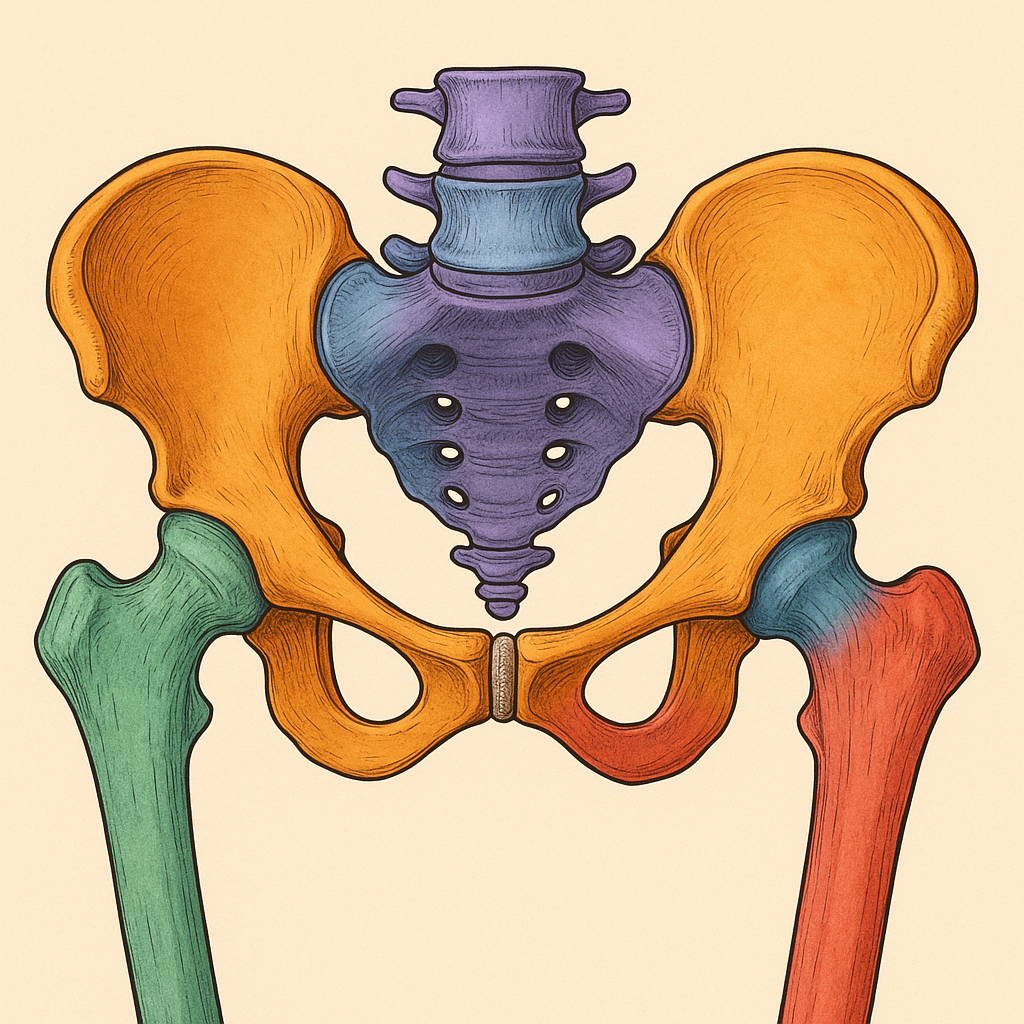
a. Ilium
- The broad, flared bone you can feel at the top of your hips.
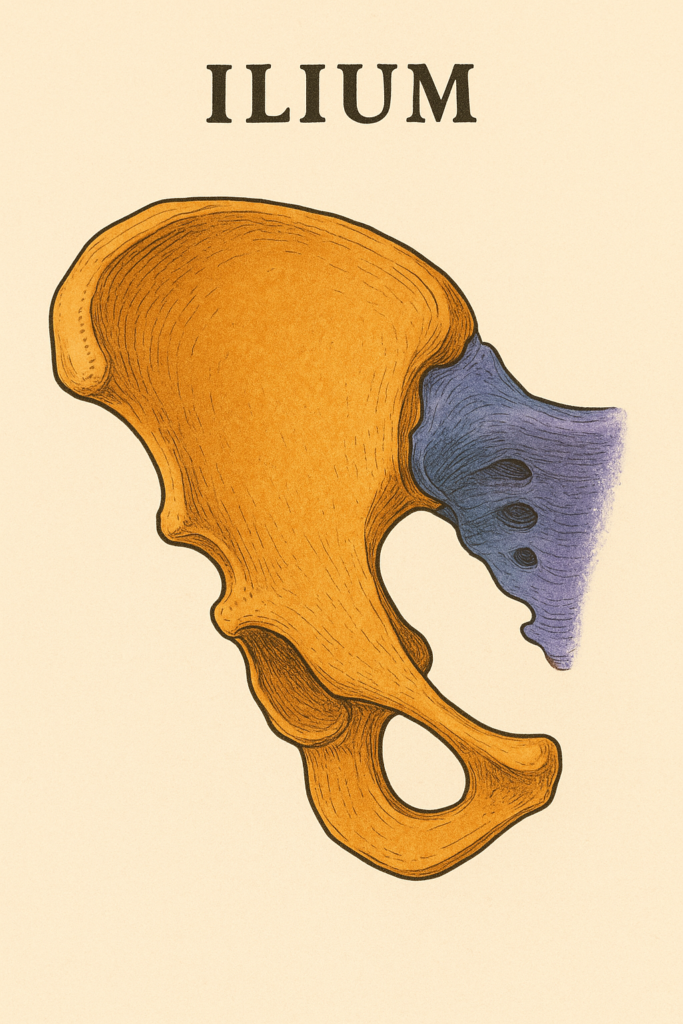
b. Ischium
- The part you sit on — your “sitz bones.
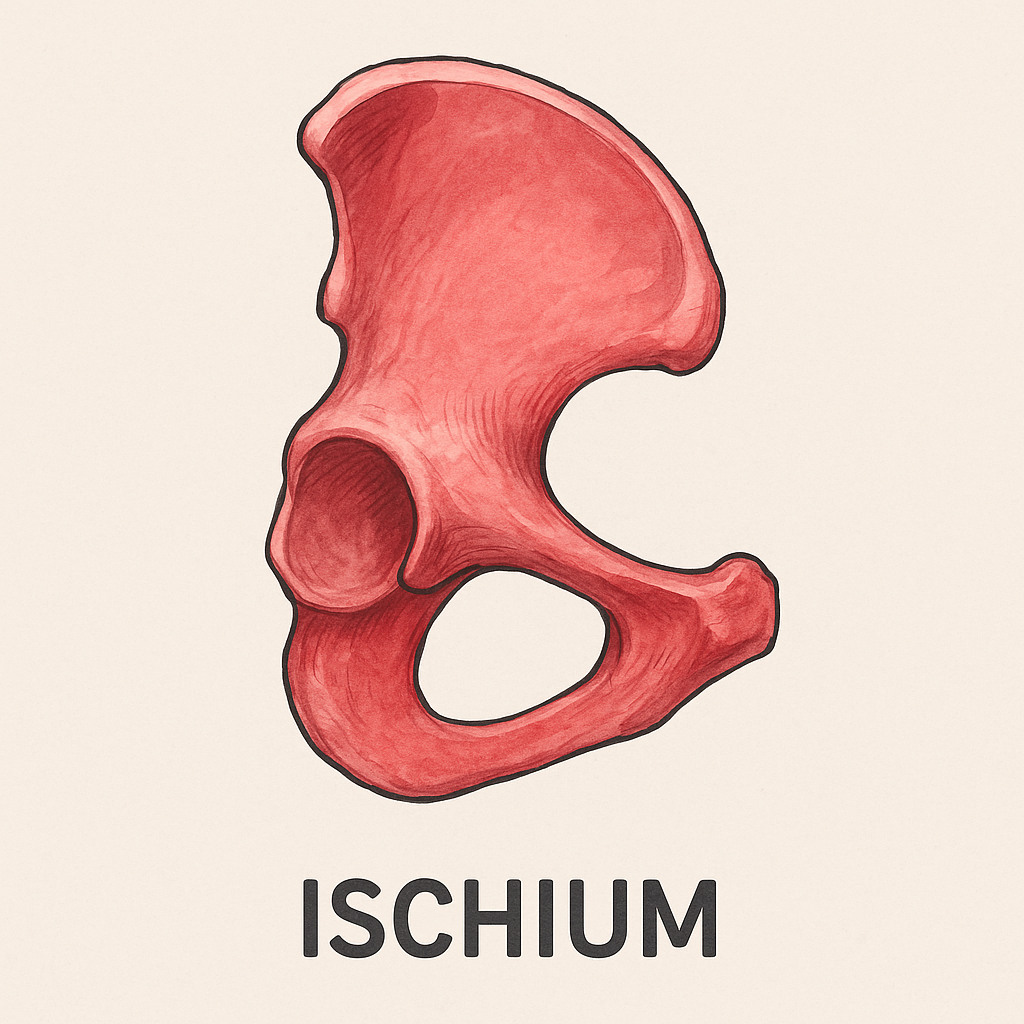
c. Pubis
- The front portion that joins with its counterpart at the pubic symphysis.
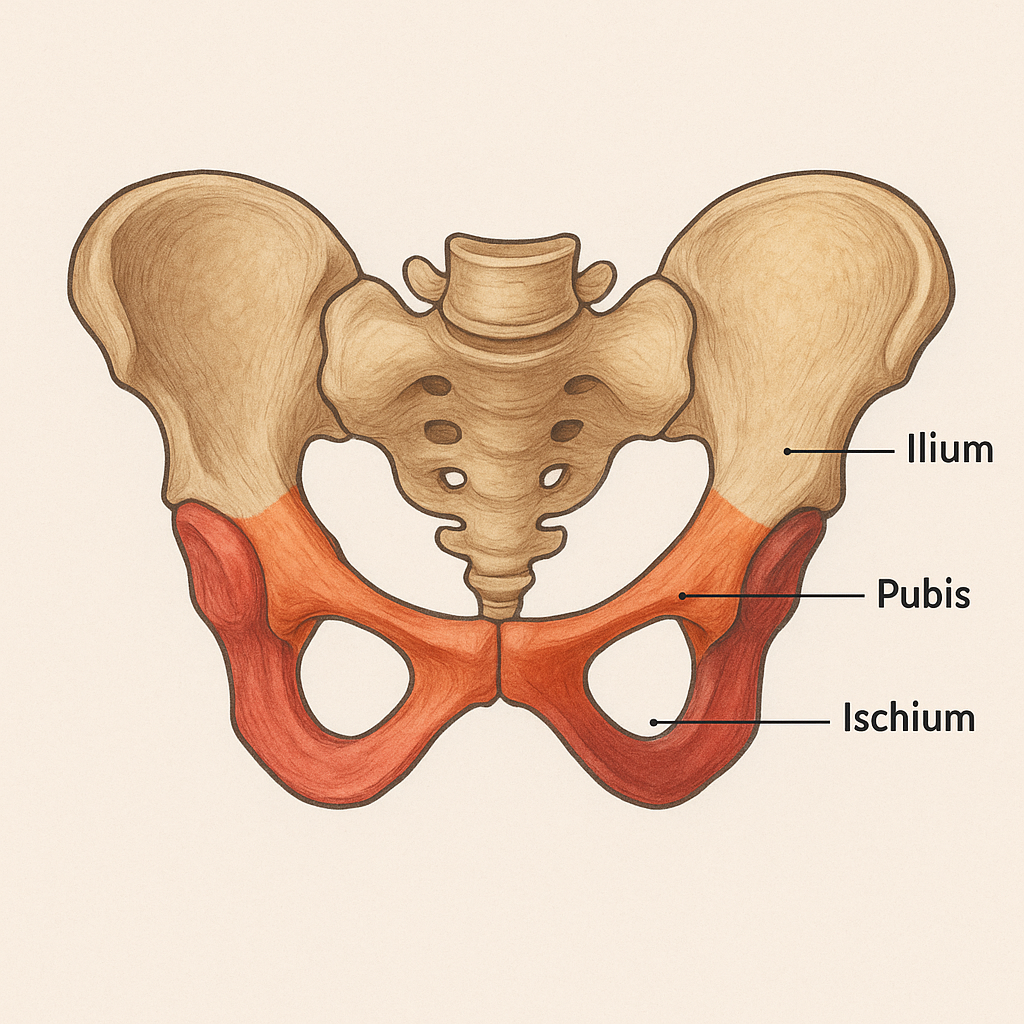
d. Sacrum
- The triangular bone at the base of the spine that connects to the ilium on either side.
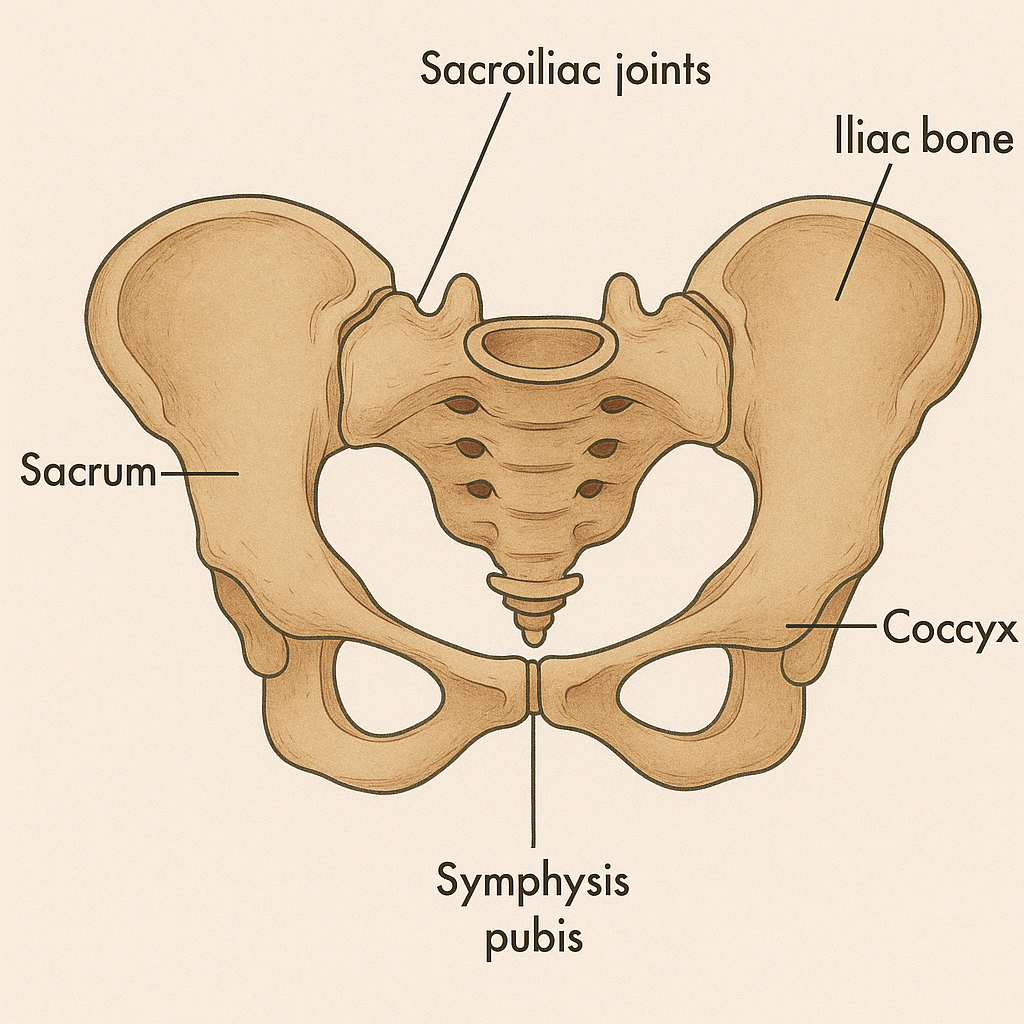
e. Coccyx (Tailbone)
- The small, bony end of the sacrum.
Together, the ilium, ischium, and pubis form the hip bone (coxal bone). The pelvis also interfaces with the femur (thigh bone) at the acetabulum, forming the hip joint.
2. What Is the Range of Motion in the Pelvic Bones?
a. Sacroiliac (SI) Joints
- Where the sacrum meets the ilium on each side.
- Movement: Minimal — ~1–4 degrees of rotation
- Nutation (sacrum tilts forward)
- Counternutation (sacrum tilts back)
- Slight gliding or shearing
b. Pubic Symphysis
- A fibrocartilaginous joint where the pubic bones meet.
- Movement: Slight separation/compression (~2mm), especially in walking, pregnancy, or twisting.
c. Hip Joint (Acetabulofemoral Joint)
- A ball-and-socket joint between the pelvis and the femur.
- Movements:
- Flexion/Extension
- Abduction/Adduction
- Internal/External Rotation
- Circumduction
3. What Is Pelvic Alignment?
Pelvic alignment refers to the functional positioning of the pelvis in relation to:
- The spine above (lumbar vertebrae)
- The legs below (femur in the acetabulum)
- Itself (left and right pelvic halves)
When the pelvis is well-aligned:
- The sacrum is centered between the ilium
- The pubic symphysis is level and not rotated
- The iliac crests and ASIS (anterior superior iliac spine) are level
- The femurs sit congruently in the hip sockets
4. The Role of Muscle Tension in Misalignment
Tight or overactive muscles can pull the pelvis out of alignment:
- Hip Flexors (e.g., psoas) → Cause anterior tilt
- Hamstrings and Glutes → Can cause posterior tilt or restrict movement
- Quadratus Lumborum or Obliques → Cause lateral tilt or rotation
- Pelvic Floor Dysfunction → Creates asymmetry in support and internal pressure
- Adductors or TFL → Create internal imbalance affecting the femoral head position
These muscle imbalances can:
- Pull one ilium forward or backward
- Create an unlevel pubic bone
- Disrupt sacral glide
- Prevent the femur from articulating correctly in the socket
5. Congruency: Spine ↔ Pelvis ↔ Hip Joint
Pelvic alignment is not isolated — it’s about congruency across the kinetic chain:
- A neutral pelvis allows the spine to stack effortlessly
- A balanced pelvis allows the femur to glide evenly in the hip socket
- Without this congruence, movement becomes compensated, restricted, or painful
6. Pelvic Alignment Is Dynamic — Not Fixed
There is no such thing as a “perfectly aligned pelvis” all the time.
- We sit, stand, walk, sleep, carry children, bend — our pelvis constantly adjusts
- The goal isn’t symmetry, it’s functional adaptability
What matters is:
- Your pelvis can move through all planes: tilt, rotate, shift
- You’re aware when you’re stuck in a pattern (e.g., anterior tilt, hiked hip)
- You have the mobility and strength to restore balance
7. Common Myths (Busted!)
❌ Myth: Everyone must have a neutral pelvis all the time.
✅ Fact: A dynamic pelvis that can move freely is more important than holding one position.
❌ Myth: Pelvic misalignment always causes pain.
✅ Fact: Many people live pain-free with asymmetries. Pain comes from dysfunction, not just misalignment.
❌ Myth: Kegels fix all pelvic problems.
✅ Fact: Kegels help in some cases, but without full-body integration and breath awareness, they can worsen imbalances.
❌ Myth: You can correct alignment by stretching alone.
✅ Fact: True alignment comes from a balance of mobility, strength, and coordination — not just flexibility.
Final Words
Pelvic alignment is not about chasing perfection, but about building awareness, mobility, flexibility and balanced strength. By understanding the structure and movement capacity of your pelvis — and the interconnected muscles — you create the foundation for healthy posture, pain-free movement, and lifelong spinal integrity.